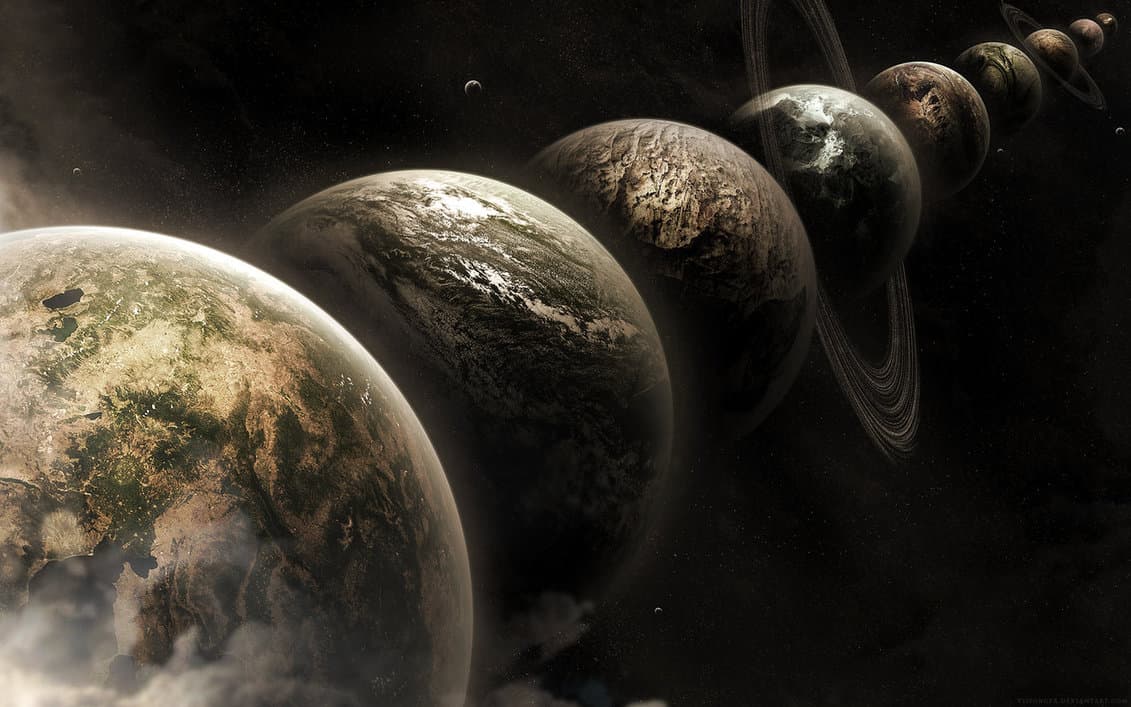Multiversal
It’s a frequent staple of science fiction—the notion that there’s another universe out there, coextensive with yet sejunct from our own; a distinct, alternate reality populated by our doppelgängers, who made all the right choices and are happily living the life we always dreamed for ourselves.
Or perhaps there’s a “multiverse”—a multitude of divergent spacetime continua, offspring of that same primordial Big Bang that gave rise to our own, each exhibiting some uniquely different physical, mathematical, or chemical property that might preclude the evolution of life as we know it.
These are familiar concepts—but what is a parallel universe, really? There are nearly as many definitions as there are potential universes in a multiverse, but let’s take a look at just a few of the myriad possibilities of cosmological plurality.
Many Worlds
Imagine an infinite universe. That’s not exactly in keeping with the best theoretical models propounded by cosmologists, which indicate we exist within an expanding but definitely finite universe that arose some 14 billion years ago.
But if the universe were infinite, then it’s mathematically conceivable that somewhere out there amidst all that immeasurable vastness is a lonely pocket of spacetime where matter and energy have assumed identical, or nearly identical, configurations to our own little corner of cosmic creation.
This form of “parallel universe” would be safely cushioned from us by the universal speed limit set by the velocity of light; but if you really wanted to get there, it’s been calculated that an identical cosmological volume would only be 1010^115 meters away, and your identical copy just 1010^29 meters away.
And that’s hardly the strangest form of parallel universe. Some cosmologists envision the early inflationary epoch spawning a multitude of “bubble universes”—in other words, the universe expanded at such a breakneck speed that pocket spacetimes pinched off and became contiguous but separate universes.
“Every experiment that brings better credence to inflationary theory brings us much closer to hints that the multiverse is real,” says Andrei Linde, a theoretical physicist at Standford University.
And there are, of course, many other scenarios that admit of cosmological parallelism. If certain superstring cosmologies are correct, our universe is a 3-dimensional “brane,” one of many, floating like drifting plankton within a hyperdimensional “bulk.” Or, according to the many-worlds interpretation of quantum mechanics, in which alternate universes are continually generated by every particle in the universe exploring every possible timeline, we’re living in a sea of infinite potential subject to our every whim.
Voyage to Another Universe
So even if there are multiple universes floating around out there somewhere, what are the odds of us ever being able to reach and explore one? Probably less than zero. We've already discussed above the physical impossibility of traveling fast enough to reach the disparate pockets of statistical repetition in an infinite universe; the odds hardly improve when it comes to universes even further removed from us.
And if the brane-theories are remotely correct, it would require liberating oneself completely from the tridimensional constraints of our local brane and “casting off” into the hyperdimensional spaces beyond, hoping somehow to locate and enter another brane. Or, if the “ekpyrotic” scenario is correct, you could conceivably wait until two branes collide, and make the transition at that catastrophic and highly uncertain point in time. This all assuming one is in possession of near-godlike powers of control over matter and energy, and is invulnerable to cosmos-creating energies.
Bottom line: parallel universes or no, we’ve got plenty to keep us occupied within the humble ambit of our own restricted and provincial little spacetime configuration, so perhaps it's time we adjust our expansive imaginations to just accept the Lilliputian dimensions of our local spacetime.
Share This Article
